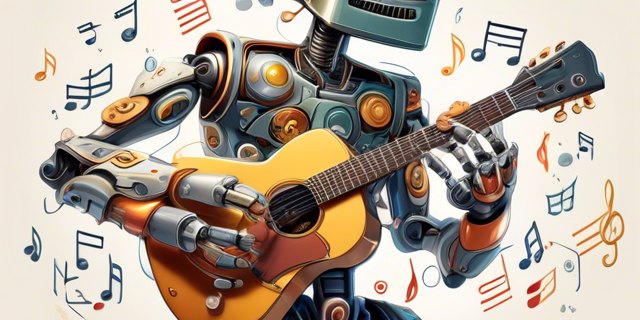Introduction
As a content creator, you may often find yourself wanting to use copyrighted music in your videos. However, using copyrighted music without permission can lead to copyright claims or even strikes on your channel. In this article, we will explore how to legally use copyrighted music in your videos and avoid any copyright issues.
Understanding Copyright
Before we dive into the methods of legally using copyrighted music, let's briefly understand the concept of copyright. When an artist creates a piece of music, they automatically own the copyright to that work. This means that they have the exclusive rights to reproduce, distribute, and perform their music. Anyone else who wants to use their music in their own work needs to obtain permission from the copyright owner.
The Consequences of Using Copyrighted Music Without Permission
Using copyrighted music in your videos without permission can have serious consequences. Platforms like YouTube have a Content ID system that automatically identifies copyrighted music in uploaded videos. If your video contains copyrighted music, you may receive a copyright claim. This means that the copyright owner has identified their music in your video and may monetize your video or take other actions.
In some cases, instead of receiving a copyright claim, you may receive a copyright strike. If you receive three copyright strikes on YouTube, your channel may be terminated. Therefore, it is essential to understand the importance of using copyrighted music legally and avoiding any copyright issues.
Using Copyrighted Music Legally
While using copyrighted music without permission is strictly illegal, there are legal ways to use copyrighted music in your videos. One such method is through a website called Licked. Licked is a chart music library that provides access to over a million songs from popular artists such as Sia, David Guetta, Charlie Puth, Anne-Marie, and Lewis Capaldi.
By purchasing a license from Licked, you can legally use copyrighted music in your videos. These licenses are affordable, starting at just eight dollars per license, and they are valid forever. This means that you can use the licensed music in your videos without worrying about copyright claims or strikes. Additionally, you can monetize your videos without any restrictions.
Another option for using music legally in your videos is to use music that is released under a Creative Commons license. Creative Commons licenses allow artists to give permission for others to use their music under certain conditions. There are several platforms and websites where you can find Creative Commons music for use in your videos.
Registering Your Own Music Copyright
If you are a musician or songwriter and want to protect your own music, it is recommended to register your copyright officially. While a copyright is formed automatically when you create a song, having an official copyright registration provides additional legal protection. Here is how you can register your music copyright:
Identify the Copyright Office in your country. For example, in Canada, you can register your copyright with the Canadian Intellectual Property Office, while in the United States, you can register with copyright.gov.
Visit the Copyright Office's website and navigate to the copyright registration section.
Fill out the necessary application and provide the required information about your musical composition.
Upload your song and any accompanying lyrics or documents that may be required.
Pay the registration fee, which varies depending on the country and type of registration.
Once your registration is complete, you will receive an official copyright stamp or certificate, which serves as proof of your copyright ownership.
By registering your copyright, you can strengthen your legal position if someone infringes upon your music or if you need to defend your rights in court.
Exploring Other Options
While Licked and Creative Commons music are excellent options for legally using copyrighted music, there are a few other alternatives worth considering. For instance, you can reach out to rights owners and artists directly to ask for permission to use their music. However, keep in mind that this approach may require negotiation or potentially involve payment, especially when dealing with famous artists and labels.
If you are unable to afford a subscription or license, there are platforms that offer free music that is safe to use in your videos. Soundstripe, Artlist, and Epidemic Sound are popular platforms that provide a wide range of royalty-free tracks. These platforms offer high-quality music that can enhance your videos without any copyright concerns.
The Future of Music Licensing on YouTube
Recently, YouTube removed the ability to search within the Content ID system, making it more challenging to determine if a particular song can be used without copyright issues. This change may have been due to low usage or the limited coverage of songs within the system.
However, there is hope for the future. Platforms like TikTok have successfully negotiated deals with record labels to use short music tracks from well-known artists. This kind of collaboration between platforms and the music industry could potentially lead to similar agreements on YouTube. Such agreements would allow creators to use popular tracks legally and help the music industry generate revenue.
Conclusion
Using copyrighted music legally in your videos is vital to avoid copyright claims and strikes on your channel. By utilizing platforms like Licked, Creative Commons music, and royalty-free music libraries, you can enhance your videos with high-quality music without any legal complications. Additionally, registering your own music copyright provides an extra layer of protection for your original compositions.
Remember, respecting copyright laws is crucial for both creators and artists. By using music legally and supporting artists' rights, we can foster a creative and collaborative environment on platforms like YouTube. So, go ahead and create amazing videos with the music you love, all while staying within the boundaries of copyright law.
